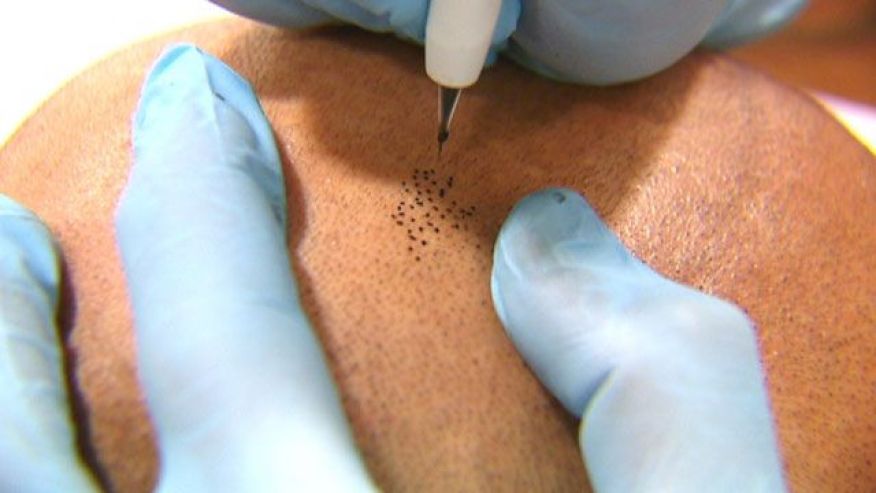
“Man flu really does exist,” reports the Mail Online in a massive leap from the results of a small study that didn’t look at flu at all.
The study actually looked at why women are more likely to have autoimmune conditions such as lupus. Autoimmune conditions are when the immune system wrongly starts attacking healthy tissue.
So, despite the suggestive headline, the strength of women’s immune systems versus men’s in combatting the flu was not part of the research.
The small laboratory study examined the expression of genes in white blood cells – part of the immune system – from human blood samples and in mice.
Immune differences between the sexes have some logic as many immune genes are on the X chromosome. As women have two copies and men only have one, you might expect differences, but normally one of the two copies in women is “silenced”. This study found sometimes the second copy in women is not fully deactivated in white blood cells.
The researchers thought this might be why women are more likely to have an overactive immune system, as occurs in autoimmune disorders. For example, 9 out of 10 cases of lupus – an autoimmune condition that can damage cells, tissue and organs – occur in women.
The research raises as many questions as it answers, such as whether similar results would be seen in studies involving more people, and other autoimmune disorders than the ones studied here.
Where did the story come from?
The study was carried out by researchers from the University of Pennsylvania and was funded by the McCabe research foundation, the Pennsylvania Department of Health, the Lupus Foundation, and the US National Institutes of Health.
It was published in the peer-reviewed journal, Proceedings of the National Academy of Sciences (PNAS).
It’s a shame the Mail Online decided to shoehorn the results of an interesting study into a lazy cliché about man flu.
Vulnerability to the flu virus was not investigated in this piece of research. It also did not find that men have “weaker bodies” or that they “can’t cope with bugs that a woman’s more powerful immune system could shrug off”. The research was performed in a laboratory setting using human and mouse cells.
What kind of research was this?
This laboratory study aimed to figure out why women are more prone to autoimmune disorders.
Autoimmune disorders occur when the body’s immune system wrongly attacks healthy cells and tissues. Examples include rheumatoid arthritis, which is three times more common in women than men, and systemic lupus erythematosis (SLE), of which around 90% of cases occur in women.
Many immunity-related genes are located on the X chromosome. As women have two X chromosomes – one from their mother and one from their father – one copy is naturally inactivated (or silenced) to prevent excess activity. This happens in each cell in a random manner, so could be the X from either mum or dad.
The researchers aimed to see if the silent X chromosome in women could be reactivated by exposure to a virus or in an autoimmune condition such as SLE, and whether this may account for the sex differences observed.
What did the research involve?
Blood samples from mice, a few healthy females and males, and five children with SLE were analysed in the laboratory.
In particular, the researchers looked at white blood cells called B and T lymphocytes, which are primarily involved in fighting viral infections.
They performed a range of experiments comparing the activity of X chromosomes in lymphocytes with other cell types not involved in the immune system. They also compared results of the X chromosomes between male and female samples.
What were the basic results?
The team showed that normal cells of the body have specific clusters of genetic material called RNA linked to X chromosome inactivation.
A big discovery was that this RNA pattern was not present in the same way in women’s B and T immune cells, suggesting less X chromosome silencing was going on.
Usually, the silenced X chromosome is tightly packaged up so none of the cell’s DNA reading machinery can get a look at the genes – so it can’t turn the DNA code into cell actions and functions. The chromosome just sits there, bundled up, doing mostly nothing.
The team’s second discovery was that in some women’s white blood cells, again the B and T cells, the silenced X chromosome was less tightly packed, meaning some of the immune genes could be read by the cell machinery.
The researchers took this as a clue as to why overexpression of immune genes might occur, and why it might be more likely for women to get autoimmune diseases.
The research team also looked at the cell genetics of women with the autoimmune disease SLE to see if anything similar was going on.
They found the levels of RNA silencing were about the same as normal, but the RNA was going to different parts of the cells than expected. It was this unusual RNA localisation they thought might be linked to the overactive immune response causing this condition – however, they were unsure about this.
How did the researchers interpret the results?
The researchers concluded that, “These findings are the first to our knowledge to link the unusual maintenance of X chromosome inactivation (the female-specific mechanism for dosage compensation) in lymphocytes to the female bias observed with enhanced immunity and autoimmune susceptibility.”
Conclusion
This small laboratory study points to specific biological mechanisms that might explain why women are more likely to suffer autoimmune disorders, such as SLE, than men.
It found the second silenced copy of the X chromosome in women can be partially reactivated and express immune-related genes, instead of staying completely silent.
Though this is a plausible reason for the overactive immune system found in SLE, it does not explain why men can also have the condition.
Also, only SLE was investigated in this study and with blood samples from just five children with the condition. It is not clear at this stage how these findings fit into the cause of SLE and whether similar mechanisms are at play for other autoimmune disorders.
There are other nuances in the results that mean this biological mechanism is not clear cut. For example, the researchers found the X chromosome silencing was affected by whether the immune cell was inactive (waiting around to fight an infection) or active (actively fighting infection by multiplying, producing antibodies, and calling on other parts of the immune system to join the party).
The results suggested that in inactive immune cells – those lazing about waiting for action – the silenced X chromosome was in a state of potential or partial reactivation, but when the cell was activated – and the fight was actually on – the silencing mechanism kicked in a little stronger to suppress the X more fully. These subtleties need a lot more investigation to pin down exactly what is going on.
While the study highlighted previous research, which found women may have stronger immune systems than men, the ability of the immune system to fight the flu was not investigated here.
[Source:- NHS]

















